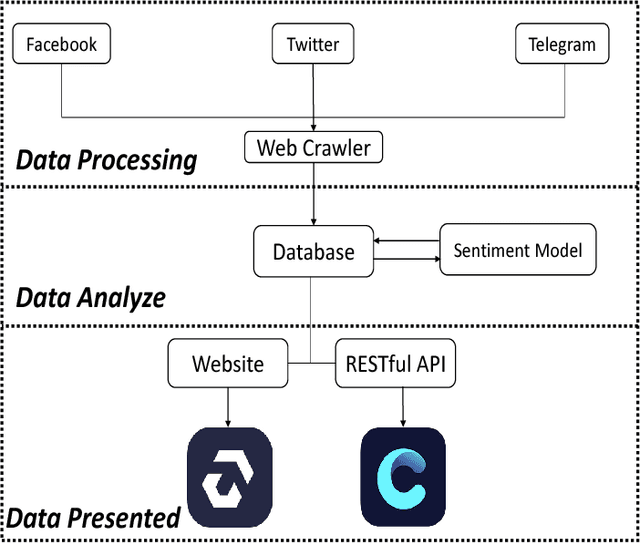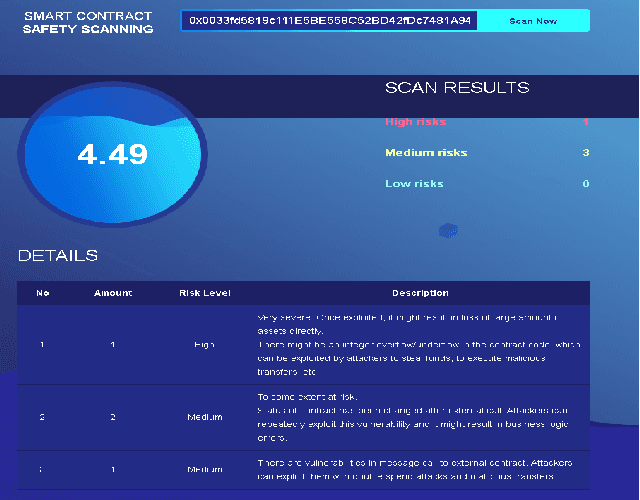TonTon Hsien-De Huang
SOC: hunting the underground inside story of the ethereum Social-network Opinion and Comment
Nov 27, 2018



Abstract:The cryptocurrency is attracting more and more attention because of the blockchain technology. Ethereum is gaining a significant popularity in blockchain community, mainly due to the fact that it is designed in a way that enables developers to write smart contracts and decentralized applications (Dapps). There are many kinds of cryptocurrency information on the social network. The risks and fraud problems behind it have pushed many countries including the United States, South Korea, and China to make warnings and set up corresponding regulations. However, the security of Ethereum smart contracts has not gained much attention. Through the Deep Learning approach, we propose a method of sentiment analysis for Ethereum's community comments. In this research, we first collected the users' cryptocurrency comments from the social network and then fed to our LSTM + CNN model for training. Then we made prediction through sentiment analysis. With our research result, we have demonstrated that both the precision and the recall of sentiment analysis can achieve 0.80+. More importantly, we deploy our sentiment analysis1 on RatingToken and Coin Master (mobile application of Cheetah Mobile Blockchain Security Center23). We can effectively provide detail information to resolve the risks of being fake and fraud problems.
Hunting the Ethereum Smart Contract: Color-inspired Inspection of Potential Attacks
Jul 05, 2018



Abstract:Blockchain and Cryptocurrencies are gaining unprecedented popularity and understanding. Meanwhile, Ethereum is gaining a significant popularity in the blockchain community, mainly due to the fact that it is designed in a way that enables developers to write smart contract and decentralized applications (Dapps). This new paradigm of applications opens the door to many possibilities and opportunities. However, the security of Ethereum smart contracts has not received much attention; several Ethereum smart contracts malfunctioning have recently been reported. Unlike many previous works that have applied static and dynamic analyses to find bugs in smart contracts, we do not attempt to define and extract any features; instead we focus on reducing the expert's labor costs. We first present a new in-depth analysis of potential attacks methodology and then translate the bytecode of solidity into RGB color code. After that, we transform them to a fixed-sized encoded image. Finally, the encoded image is fed to convolutional neural network (CNN) for automatic feature extraction and learning, detecting compiler bugs of Ethereum smart contract.
R2-D2: ColoR-inspired Convolutional NeuRal Network (CNN)-based AndroiD Malware Detections
Dec 05, 2017



Abstract:Machine Learning (ML) has found it particularly useful in malware detection. However, as the malware evolves very fast, the stability of the feature extracted from malware serves as a critical issue in malware detection. Recent success of deep learning in image recognition, natural language processing, and machine translation indicate a potential solution for stabilizing the malware detection effectiveness. We present a coloR-inspired convolutional neuRal network-based AndroiD malware Detection (R2-D2), which can detect malware without extracting pre-selected features (e.g., the control-flow of op-code, classes, methods of functions and the timing they are invoked etc.) from Android apps. In particular, we develop a color representation for translating Android apps into RGB color code and transform them to a fixed-sized encoded image. After that, the encoded image is fed to convolutional neural network for automatic feature extraction and learning, reducing the expert's intervention. We have collected over 1 million malware samples and 1 million benign samples according to the data provided by Leopard Mobile Inc. from its core product Security Master (which has 623 million monthly active users and 10k new malware samples per day). It is shown that R2-D2 can effectively detect the malware. Furthermore, we keep our research results and release experiment material on http://R2D2.TWMAN.ORG if there is any update.
 Add to Chrome
Add to Chrome Add to Firefox
Add to Firefox Add to Edge
Add to Edge